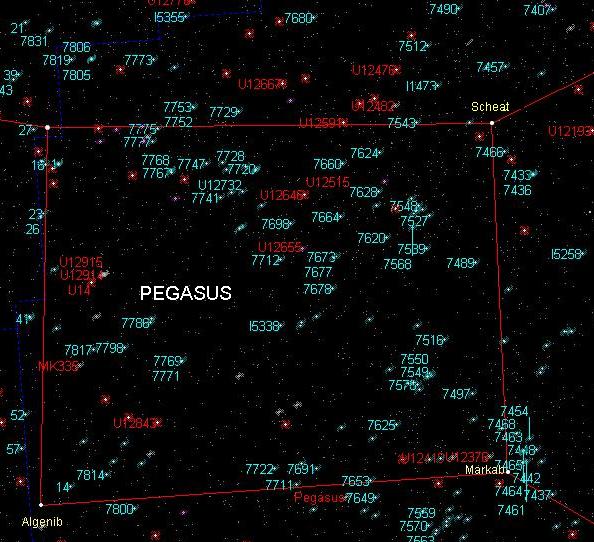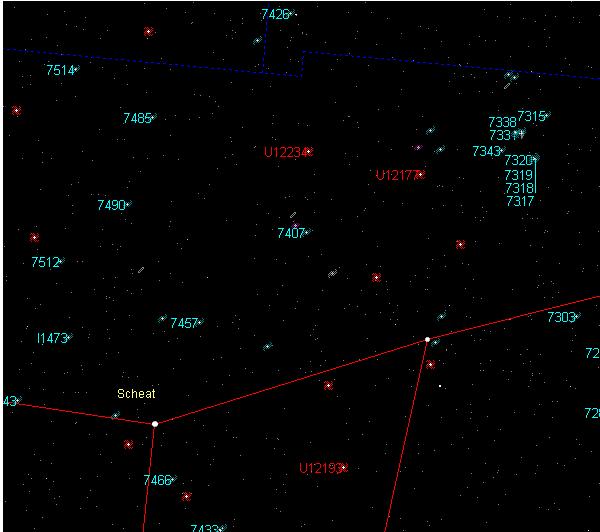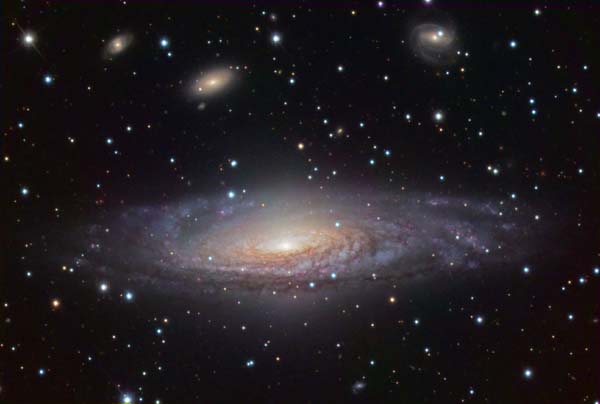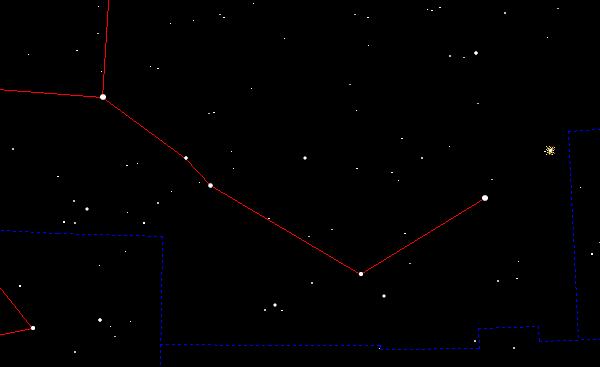Giddy Up Pegasus
Other than the familiar circle, a square is one of the easiest shapes to recognize. After all, it consists of four equal-length sides with its corner measuring perfect 90-degree angles. If I were to ask you to point out a nonagon in the night sky, not knowing it is a nine-sided polygon with 140 degrees inside angles, you would never find it. However, you would have better luck with the common square.
The great square in the night belongs to Pegasus. The winged horse is portrayed in the mythological story of Perseus the hunter slewing the Medusa and saving Andromeda from the sea monster - Cetus. Perseus and Andromeda fly off into the sunset on the winged beast. It is not a perfect square in the sky but still close enough to the real thing. Each side measures from thirteen to fifteen degrees of sky, so this is a large constellation.

Pegasus ranks 7th in overall area with 1,121 square degrees of sky. All but three of the 298 NGC objects that reside within its borders are galaxies. With numbers like this, your night is definitely cut out for you. First, let us look at the star Markab – the horse’s neck. Markab designated the alpha star is found in the southwest portion of the great square and is a sun on its last legs – literally. This class B sun is located 140 light-years away and is just over 200 times the luminosity of our Sun.
This star should be undergoing vicious physical changes as it appears to be starved for fuel. If it has not met its demise, Markab will soon show signs of withering. When this occurs, Markab will expand rapidly which in turn will cause the star to rotate slower and become a much cooler orange giant. Markab will then brighten to many times its current luminosity to die finally as a massive white dwarf like Sirius-B.

One of the prettiest galaxies to grace Pegasus is NGC 7331. Nicknamed the “Deer Lick” galaxy, NGC 7331 is a very close resemblance to our own Milky Way Galaxy and gives us a nice indication of what our galaxy would look like from 46 million light-years away. I wonder why Charles Messier never included this gem in his catalogue of objects. NGC 7331 is a delicate spiral galaxy whose arms appear a bit more expanded on one side. Above is a fantastic image was taken by Dietmar Kupke, Stefano Cancelli, Paul Mortfield all from Toronto, ON. Keep up the great work.
If you use the Deer Lick galaxy’s length as a pointer, slide your scope south 30 arc minutes or the width of the full moon until you come to a tiny patch of fuzz. If dark skies are in your back pocket, you have found Stephan’s Quintet. Catalogued as Hickson 92 or Arp 319, the Quintet is a treasure of five extremely faint galaxies in one neat little package. Their magnitudes range from 13.6 to 14.8. This little package is an estimated 280 million light-years from us.

Another wonderful galaxy to add to your observing list is NGC 7479. This 11th magnitude object is listed at 105 million light-years away. At 4 X 3 arc minutes, this backward shaped S could be a bit of a challenge. By comparison, NGC 7331 measure 11 X 4 arc minutes. For a change of pace, M15 is a beautiful globular cluster located some 33,000 light-years away. Deemed as one of the oldest clusters around, it is thought to be almost as old as the Universe itself, M15 contains 112 variable stars and 8 pulsars including one double neutron star system. To top it off, astronomers believe M15 possesses a central black hole. Now that is some collection. For a challenge, try to locate Pease 1 which is the planetary nebula seen to the top left of the cluster.

The Jupiter show is winding down. With a combination of a close approach to Earth as well as riding higher on the ecliptic than in the past few years, astrophotographers worldwide had a great opportunity to attain their own personal image of our solar system’s largest planet. It is a show that I will never forget. Jupiter attained opposition on September 21st and is slowly moving away from us so now is the time to still catch some good seeing. The king of planets is up in the east just before sunset and is unmistakably bright all night long. Only the moon is brighter.
Although Venus is now sliding between the Sun and us, it is seen very low on the ecliptic in the west after sunset and passes below the Sun (inferior conjunction) on October 29th. A few weeks later, it moving into the morning sky. Beginning October 6th the Zodiacal Light can be seen in the east before dawn sky lightens. The Zodiacal Light is caused by Earth and our location on it, lining up with the leftover dust and rock debris of the inner solar system. This is not an atmospheric display but interplanetary from us to the Sun. For the next two weeks without moon interference, this is a nice target to try to photograph.
Our astronomical community worldwide will be celebrating Astronomy Day part 2 on October 16th. On this day astronomy and stargazing clubs and other organizations around the world will plan special events. You can find out more about October's events by checking the Astronomy Day link.
We have not had a naked eye comet for a couple of years but the drought is over. Comet Hartley is now well placed in Cassiopeia thus visible all night long. Use the chart to follow its path across the sky. Around October 20th should be your best time to see Hartley 2 without optical aid but you still need to find a dark spot. On the 20th the comet will be only 18 million kilometres from Earth. Who will have the best seat to view our interplanetary visitor? It is more like what. NASA's Deep Impact spacecraft will observe comet Hartley 2 from a distance of about 600 miles. This would also be a great target for Astronomy Day star parties.
The Orionids Meteor Shower is expected to put on a good display in the morning hours between Oct 20 and 24. With a predicted rate of only 20 meteors per hour, it will not be a great show but it is still a meteor shower. Best viewing is looking east after
And lastly, the new moon is slated for October 7th with the full Hunter’s moon occurring on the 23rd.
Until next month, clear skies everyone.
